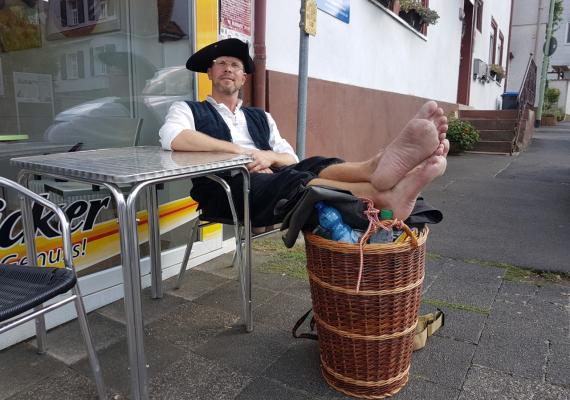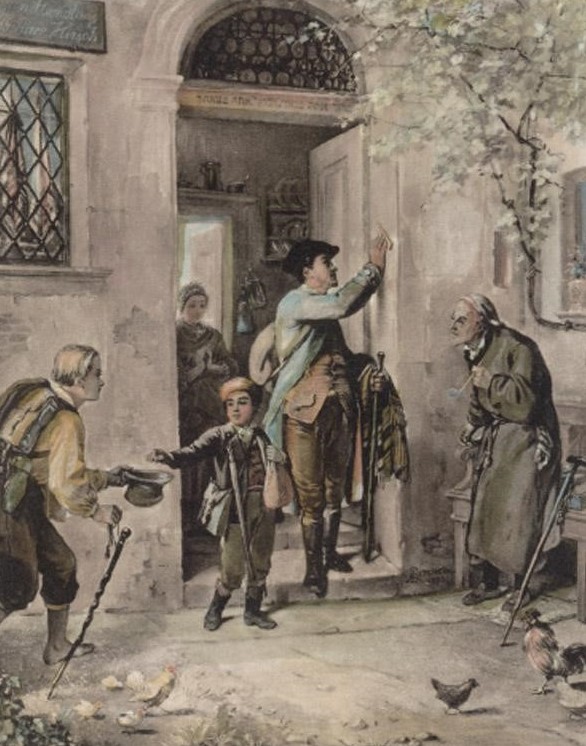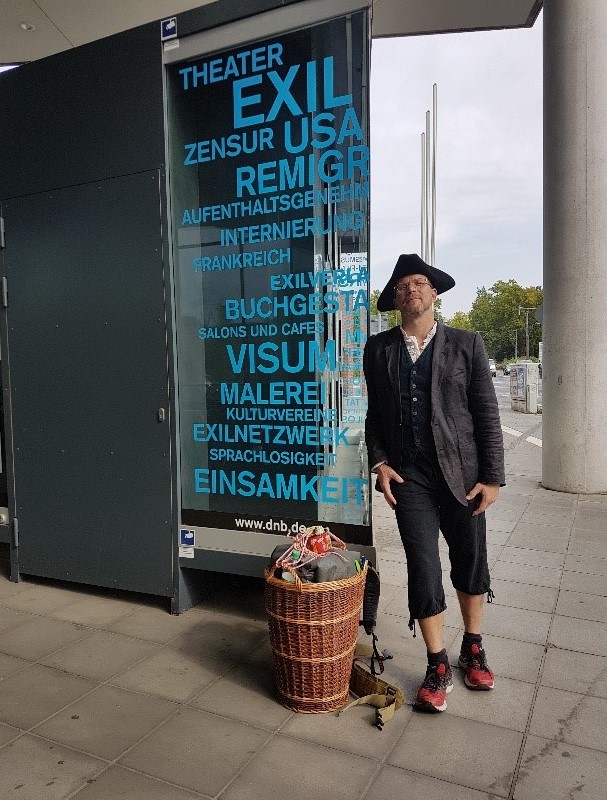Doing the Legwork: Following the Paths of Jewish Peddlers

When on a late summer evening in July 1571, Manus of Steinhaus was arrested by a sheriff in between two small towns in Hesse (Germany), the young Jew must had been terrified. Manus was nearing the end of four weeks on the road, where he had been trying to change money currencies, rather unsuccessfully. He was completely worn out from traveling nearly 60 kilometers in one day, and was yet 16 kilometers from home. To make matters worse, the sheriff now also accused him of tax evasion. The interrogation records reveal that Manus traveled well over 600 km during these four weeks and often undertook daily marches of more than 50 km.

Around 440 years later, a colleague of mine came across these interrogation records in the Hessian State Archives in Marburg, and provided me her transcription of this hard-to-read document.* I was at the time focusing on the living conditions of Jewish peddlers and not episodes like that of Manus, who was a traveling money changer who also collected charity for orphans. But as I read I became more and more interested. I wondered what the experience would have been like. I enjoy hiking, and had always wanted to go on a longer trip through Germany. And so I decided last year to combine my hobby with my ongoing research on the living conditions of peddlers as well as the accounts from the archive in Marburg. Manus of Steinhaus’s itinerary—which led from Frankfurt am Main via Marburg and Fulda through to the Thuringian Rhön Mountains—became the roadmap of my own journey. For this route, as preserved in the sources, is one of the few that provide details concerning routes, stops, and dates for a Jewish walking trader.
In order to become a peddler and see what I could from their perspective, I bought a willow pannier, historical flax clothing, and a nice hat; then on a sunny day I took the express train to Frankfurt am Main. I rushed through the city center, past the German National Library and the Jewish Cemetery, straight to my first stop, Friedberg. I could tell many interesting stories about this nearly one-week-long walk—such as the many conversations I had with locals whom I met along the way, and who always wanted to know the purpose of the willow pannier and the strange clothes. Some invited me for a coffee or helped me out in difficult moments. Yet, apart from these modern day encounters and adventures, the question arises: what scholarly benefits could I possibly gain from such a journey for my own research questions?

I got a better sense of the physical hardship of such a life. A particular impasse proved to be the old trade route between Marburg and Kirchhain, which entailed one extremely steep hill that robbed me of all my strength and taught me a very practical lesson of what it means to carry around a willow pannier over the course of several days. Uphill, the more than 12-kilogram load began to make itself felt, causing pain, and forcing me into a hunched posture in order to distribute the burden evenly over my entire upper body. Downhill, not only did tripping hazards increase, but also the stress on my joints, which would certainly cause painful wear over the years. I was very lucky with the weather: early modern peddlers, by contrast, had to carry out their work in intense heat in summer and in deep snow during the winter, risking their lives and health doing so. Rain in any season would have threatened their goods, and thus there was fear that the weather could destroy not only their health, but their means of livelihood.
Peddlers’ work was further complicated by insufficient food, access to which, on the road, was already limited by kashrut. In areas where there was no Jewish population or which were only sparsely populated, a peddler would have had to carry his own nonperishable food. I myself ran out of food while deep in the forest just a few kilometers away from reaching the town of Schlitz. My spirits reached an absolute low point due to hunger and fatigue. When I finally reached the next village, every shop and restaurant was closed. How happy was I when a man offered me a plate of warm noodles, a bowl of rice pudding, and a bottle of fizzy water —free of charge. This is the sort of kindness peddlers may have often hoped for, though it is not clear how often they received it.
After I was finally back home and experiencing such profound relief not to have to carry again the willow pannier the next day, I realized the important function a rest day can have for humans. When exposed to extraordinary physical strains, the human body demands a break from work. For peddlers, I realized, Shabbat constituted a life-saving measure—without it, they would have ruined themselves physically rather fast.
Certainly, the conditions faced by peddlers of long gone centuries have little in common with a modern-day wanderer in high tech shoes. Still, this form of experiential field research made me ask many new questions and interpret ancient data anew—adding a great deal to the texts through which I have up to now discovered and developed new questions and insights.
*Uta Löwenstein summarized this court record in “Quellen zur Geschichte der Juden in Hessen“ vol. 2 (Wiesbaden, 1989), Nr. 2092. Later Michael Toch analyzes this document in his chapter titled “Aspects of Stratification of Early Modern German Jewry: Population History and Village Jews,” in In and Out of the Ghetto: Jewish-Gentile Relations in Late Medieval and Early Modern Germany, ed. R. Hsia and H. Lehmann (Cambridge, 1995), 77–90.
